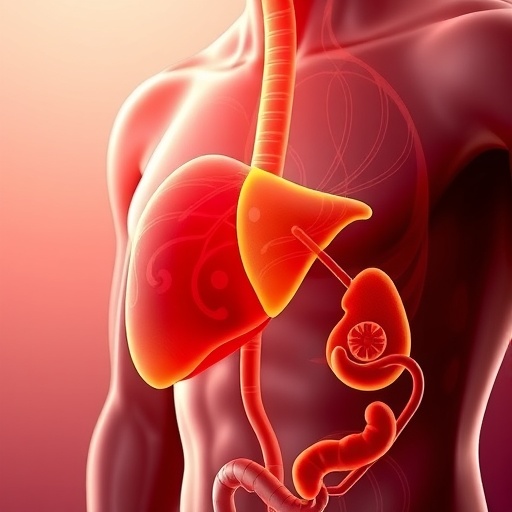The global surge in obesity and its related metabolic disorders continues to challenge public health frameworks worldwide, driving a quest for innovative interventions. As cardiovascular diseases and type 2 diabetes prevalence soar hand in hand with excess weight, researchers are increasingly turning their attention towards the intricate metabolic interplay between critical organs. Among these, the liver and brown adipose tissue (BAT) stand at the forefront due to their pivotal roles in regulating energy balance, lipid metabolism, and thermogenesis. Recent scientific advancements are shedding light on how natural bioactive compounds can orchestrate this hepatic-BAT axis to counteract metabolic dysfunction and restore homeostasis.
Emerging evidence underscores the efficacy of naturally occurring bioactive compounds in modulating liver-BAT crosstalk. Polyphenols, alkaloids, and terpenoids—distinct classes of plant-derived molecules—appear to engage key signaling pathways that mediate metabolic flexibility. Compounds such as resveratrol and curcumin (polyphenols), berberine (alkaloid), and paeoniflorin and shikonin (terpenoids) have demonstrated promising capacity to activate adenosine monophosphate-activated protein kinase (AMPK), influence peroxisome proliferator-activated receptor (PPAR) pathways, and enhance UCP1-mediated thermogenesis in BAT.
Mechanistically, these bioactive agents facilitate a reduction in hepatic lipogenesis and gluconeogenic flux, thereby lowering circulating glucose and lipid levels. Concurrently, by stimulating BAT thermogenesis and promoting lipid oxidation, they augment energy expenditure. This dual action addresses the pathogenic hallmarks of obesity and insulin resistance, highlighting a sophisticated pharmacological potential embedded in natural compounds.
Moreover, the interplay involves hepatokines—liver-derived secretory proteins such as fibroblast growth factor 21 (FGF21)—and batokines, which serve as endocrine signals coordinating systemic metabolic adaptations. Natural bioactives appear to modulate the secretion and activity of these mediators, effectively fine-tuning interorgan communication essential for maintaining energy homeostasis.
Clinical and preclinical investigations have started to unravel how these compounds translate into tangible metabolic benefits. Rodent studies reveal improved insulin sensitivity and reduced adiposity upon administration of these natural agents, while emerging human data from nutraceutical interventions suggest potential for adjunctive therapy. Nonetheless, challenges remain, particularly in elucidating precise mechanisms, determining effective dosing, and addressing interindividual variability.
In parallel, PPARs, nuclear hormone receptors integral to lipid metabolism and adipogenesis, emerge as targets modulated by these natural compounds. The ability to fine-tune PPAR signaling holds promise in recalibrating metabolic flexibility, particularly shifting energy usage towards fatty acid oxidation. This shift is essential for combating hepatic steatosis and improving insulin responsiveness in peripheral tissues.
The thermogenic prowess of BAT, driven predominantly by UCP1, represents a metabolic sink capable of substantial energy expenditure. Encouragingly, compounds such as berberine and paeoniflorin have been observed to upregulate UCP1 expression, thereby potentiating BAT activity. This activation counters obesity by increasing basal metabolic rate, positioning BAT as a therapeutic target not only for weight management but also for glucose homeostasis.
Understanding hepatokine and batokine signaling provides new molecular insights into how liver and BAT co-regulate systemic metabolism. FGF21, a hepatokine extensively studied for its metabolic effects, is augmented by certain natural bioactives, enhancing glucose disposal and lipid oxidation. Similarly, batokines secreted by activated BAT modulate liver function, closing a feedback loop that maintains equilibrium.
Despite promising data, translating these findings into clinical practice requires addressing several hurdles. Dose optimization, long-term safety, and understanding individual metabolic responses are critical areas needing comprehensive research. Personalized nutrition strategies integrating natural bioactives could offer tailored therapeutic modalities, optimizing efficacy while minimizing adverse effects.
Furthermore, the integration of nutraceuticals into lifestyle interventions amplifies their potential. When combined with diet and physical activity, these natural compounds may synergistically restore metabolic homeostasis. This multidimensional approach aligns with precision medicine paradigms and could revolutionize management practices for obesity-linked disorders.
In summary, the endocrine regulation of metabolic crosstalk between the liver and brown adipose tissue by natural bioactive compounds delineates a promising frontier in metabolic research. The convergence of molecular biology, pharmacology, and nutrition sciences is unveiling novel mechanisms to harness these substances in combatting the global burden of obesity and metabolic diseases.
As awareness of these natural modulators grows, they may soon become integral components of holistic metabolic health strategies, offering hope for millions struggling with obesity-related complications. Continued interdisciplinary efforts are warranted to fully decode their potential and develop evidence-based applications that transcend traditional pharmacotherapy.
This burgeoning field, at the interface of natural product chemistry and metabolic physiology, exemplifies how ancient botanical wisdom intersects with cutting-edge science, propelling us toward innovative and sustainable solutions for some of today’s most pressing health crises.
Subject of Research:
Article Title:
Article References:
Chen, QC., Cai, WF., Ni, Q. et al. Endocrine regulation of metabolic crosstalk between liver and brown adipose tissue by natural active ingredients. Int J Obes (2025). https://doi.org/10.1038/s41366-025-01793-7
Image Credits: AI Generated
DOI: https://doi.org/10.1038/s41366-025-01793-7
Keywords
Tags: bioactive compounds for obesity treatmentbrown adipose tissue thermogenesisinnovative strategies for metabolic homeostasisinterventions for metabolic disordersliver function and energy metabolismmetabolic crosstalk between liver and BATnatural compounds for liver healthobesity and cardiovascular disease linkplant-derived molecules in healthpolyphenols in metabolic regulationsignaling pathways in liver-BAT interactionUCP1 and energy expenditure





